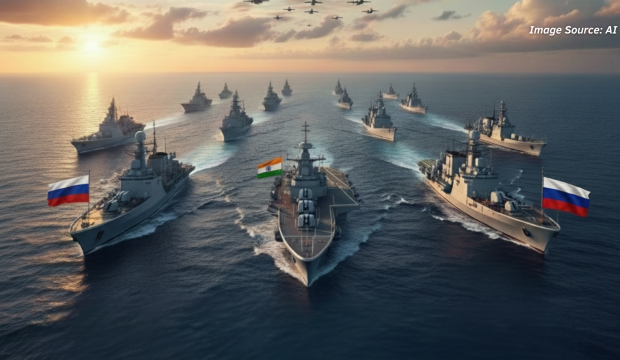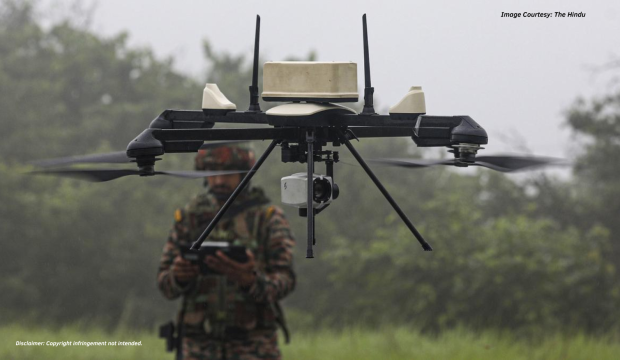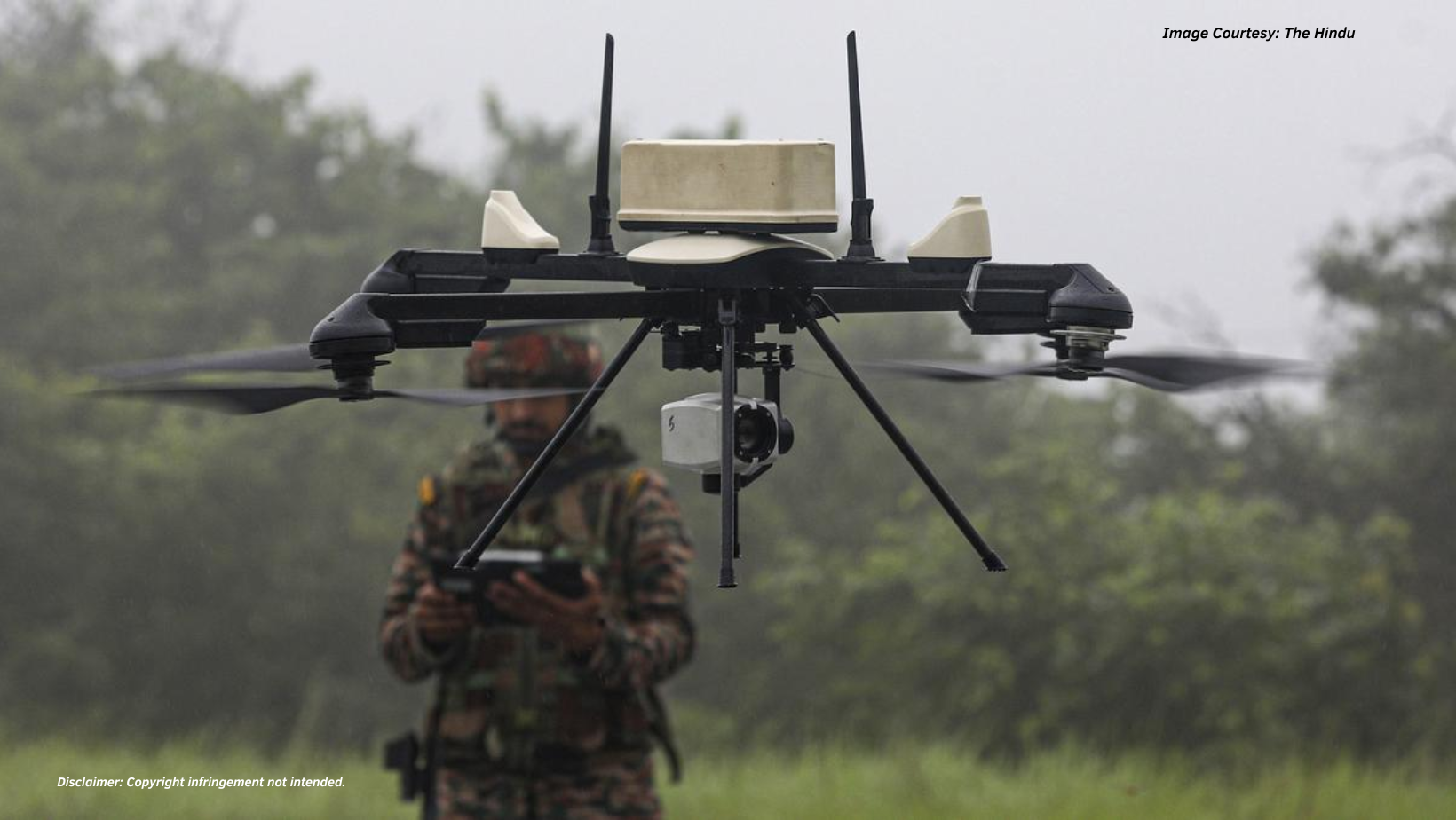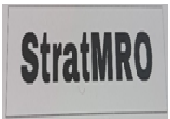Introduction
Since the beginning of the Russia-Ukraine war, nuclear security has been of critical concern to the west and the world. The Kremlin had projected around 20 nuclear signals to Ukraine and to the west in the first ten weeks of the war. The repetition of nuclear threats adds more concern to the situation and reveals the high anxieties present in the Kremlin that could escalate to a risky decision making. However, Ukraine and the West are perceiving the nuclear threats as just rhetoric and that the Kremlin is blustering about the use of nuclear weapons in this limited war.
The recent nuclear sabre rattling by Russia has raised concerns for international security to the level of the Cuban Missile Crisis during the Cold War. On 25 May, Russia’s Defence Minister Sergey Shoigu and Belarus’s Defence Minister Viktor Khrenin formally agreed to deploy tactical nuclear weapons in Belarus. However, the command and control lies with the Kremlin. Earlier, on 25 March 2023 President Vladimir Putin announced the initiative in response to the increasing military aid to Ukraine, and the UK defence ministry decided to send Ukraine the Challenger 2 tanks with depleted Uranium shells. The decision to deploy nuclear weapons in Belarus also follows a month after Russia’s withdrawal from the New START Treaty. The exiled opposition leader of Belarus, Sviatlana Tsikhanouskaya stated that this action will result in Russia’s control of Belarus for a long term, and will jeopardise the security in Europe.
Tactical nuclear weapons (TNW) have not been clearly defined by anyone. It may be defined in terms of missile range, blast yield and target to attack. Nuclear Threat Initiative defines TNW are those that are intended to destroy enemy troops and weapons on the battlefield. They have a relatively short range and a much lower yield than nuclear warheads fitted to long-range strategic missiles that are capable of obliterating whole cities. The possibility of Russia using TNW’s for offensive or deterrent capabilities are of concern for international security. Each side hopes that the destructiveness of large city-obliterating nuclear weapons will deter the others from using them, which is why TNWs exist. Nuclear weapons’ application is made more conceivable by reducing their size and improving their ability to target specific areas. Ironically, although this increases the credibility of deterrent threats, it also increases the temptation to employ the weapons offensively rather than in retaliation.
In this context, the article will first look into why and how Russia decided to place TNW’s in Belarus. Second, to understand what is the Kremlin’s strategy with TNWs in the context of the war and how will the US and the west respond to the possible use of TNWs. Third, lessons are drawn from the Cuban Missile Crisis to deescalate the situation and finally, lessons for India are identified and examined.
The Russia-Belarus Equation And The Reverse Of The Budapest Memorandum
Since the beginning of the war in Ukraine, Belarus has been an ally of Russia. The country is interdependent on Russia for its economy and military support, as the west has sanctioned it on numerous counts. For many years, the president of Belarus, Aleksander Lukashenko had used Belarus as a kind of pawn, changing his enticements from Russia to Western countries and back as his circumstances required. However, in the 2020 presidential election, when Lukashenko declared a landslide victory in his favour, the US and its allies in Europe, as well as the opposition, immediately challenged Lukashenko’s declaration of victory in the contentious election. Unprecedented numbers of protesters took to the streets in Belarus. In his 26 years in office, Lukashenko faced the strongest popular threat and looked to Putin for assistance. Putin responded, saying that the Russian military was prepared to step in “if necessary.” Since then, Lukashenko has been in favour of Putin amidst growing animosity with the West.
The Budapest Memorandum
Belarus received nuclear weapons from the Soviet Union, just like Ukraine and Kazakhstan did. These weapons were intended to be removed from Belarus following its declaration of independence in 1990. The 1994 Budapest Memorandum established a procedure for doing so in return for security guarantees from the UK, US, and Russia. However, the memorandum reversed when Alexander Lukashenko passed a referendum to renounce the state’s non-nuclear status in February 2022 just four days after the commencement of war in Ukraine. This set the foundation for accommodating nuclear weapons in Belarus for the first time since the memorandum. Since then, Russia has been upgrading Belarus to be a nuclear-capable state by transferring Iskander-M ballistic missiles and modifying fighter jets to carry the weapons. This denotes that Belarus welcomes the TNWs on its soil, despite losing some extent of sovereignty and is not being pressured to do so.
Strategic Position Of Belarus
Belarus is located close to the capital of Ukraine and borders three NATO member countries, Lithuania, Latvia and Poland. Russia’s ICBMs could also reach Kiev but the strong air-defence of Ukraine supported by the West’s equipment and systems may not make it effective. Belarus does not lend any significant strategic advantage for Russia to attack Ukraine. However, the decision by Russia signifies an escalation in the conflict and raises several concerns and potential consequences. Firstly, it exacerbates the already tense relations between Russia and the West, pushing the boundaries of what has been a predominantly conventional conflict. It signals Russia’s willingness to introduce nuclear dimensions into the war, as it is experiencing significant failures on the battlefield and marginally losing gained territories. Placing nuclear weapons in Belarus has broader implications for regional security. It creates a dangerous precedent that could prompt other countries to reconsider their own security postures and potentially lead to an arms race in the region.
Russia’s TNW Strategy and Red Lines
Ambiguous Red Lines and Deterrents
Russia’s defence minister, Sergei Shoigu maintains that the Kremlin’s nuclear doctrine states that nuclear weapons will be first used only when the nation is threatened existentially. The Kremlin which plans to annex the Donbas region through referendums, may consider Kiev’s effort to reclaim the territory as existentially threatening. However, recently the Ministry of Foreign affairs stated that the tactical nuclear weapons will only be used in defence of Russia. Earlier, on 07 December 2022, president Putin also mentioned that nuclear weapons will only be a factor of deterrence. There is ambiguity present in Russia’s nuclear rhetoric by trying to balance between threats and reassurances of only deterrence and defence. The ambiguity is deliberate to keep analysts occupied on estimating where the red lines might be. This makes it more difficult for the west to decide how much involvement in the conflict could provoke nuclear use by Russia. The only way the West can determine the redlines is by poking the bear until it growls loud and clear.
The Concept of Nuclear De-escalation
Western analysts have identified Russia’s nuclear strategy in warfighting. They state that Russia’s Military Doctrine of 2000 and consequent doctrines introduced the notion of de-escalation—a strategy envisioning the threat of a limited nuclear strike that would force an opponent to accept a return to the status quo ante.[i] The revised doctrine permits nuclear weapon use in response to attacks involving weapons of mass destruction or large-scale aggression against Russia’s national security and allies. This lowers the threshold for nuclear weapon use, representing a shift from previous limitations.
To Win The Losing Conventional War
The battle of Bakhmut was a difficult battlefield for Russia and Ukraine. Though it won the battle with the help of the Wagner group, it lost a significant number of men and resources. The long-awaited spring counter-offensive of Ukraine in the war has regained a few villages along the frontlines. In the latest military package to Ukraine, on 07 June 2023 the US announced to send arms worth USD 325 million for the counter-offensive.[i] [ii] In addition to providing Ukraine with arms, Washington also directs as to where to aim them. In order to enable the Pentagon and American intelligence services to provide real-time targeting information to the Ukrainian military, the Biden administration is said to have dramatically eased internal rules. The continued arms and intelligence aid for Ukraine depicts that the West has still not been deterred to limit its involvement in the war. If the Ukrainian counter-offensive holds and is successful in reversing Russian gains, president Putin might consider using the TNW for battlefield gains.
To Motivate The Soldiers
The usage of TNWs in the battlefield will significantly boost the morale of the foot soldiers in the war. With diminishing arms and ammunition, the TNW may make a forward path for the Russian soldiers. Ukrainian soldiers will experience severe psychological impact as well. Ukraine with a large swath of fertile fields may be exposed to nuclear fallout and radiation.
The US and NATO’s TNW strategy and responses
The US And Nuclear Sharing
The US owned nuclear weapons have been positioned in Europe after President Dwight D. Eisenhower authorised their storage since the mid-1950’s. The nuclear sharing practise allows non-nuclear member states to be involved in using nuclear weapons by upgrading their conventional attack aircraft to deliver the weapon in the event of its use. The US also retains complete custody and control over all of its nuclear weapons deployed in Europe.
The US Nuclear Posture Review 2022 maintains that the policy seeks to “maintain a very high bar for nuclear employment” and, if its use its deemed to be necessary they may, “seek to end conflict at the lowest level of damage possible on the best achievable terms for the United States and its Allies and partners.” In response to the Kremlin’s deployment of TNWs, the US may include more members in its nuclear sharing to deter Russia. Poland, a NATO member and neighbour of Belarus and Ukraine is willing to host US nuclear weapons to deter Russia’s threat.
How Would NATO Respond?
NATO’s present nuclear policy is derived from two official documents, the 2022 Strategic Concept and the 2012 Deterrence and Defence Posture Review. Both these documents agree that “A nuclear war cannot be won and must never be fought,” and that nuclear weapons hold value for defensive position, deterrence and prevent war. However, NATO’s possession of nuclear weapons has not deterred aggression and prevented war by Russia. The documents have no mention of how the alliance would respond to a TNW, which is used for battlefield gains only.
NATO Chief Jens Stolenberg has stated that the alliance would respond with a “mixed military strategy” against the use of a nuclear weapon. Analysts state that the use of TNW by Russia in Ukraine could be a red line that NATO is willing to cross to involve directly in the war. If a TNW is used on Ukraine, NATO will be primarily concerned about the nuclear fallout drifting on its member states. If NATO considers it as an attack and not an accident, then the possibility of invoking article 5 is likely.
Lessons From Cuban Missile Crisis
On 06 October, president Biden stated that the present nuclear “Armageddon” is at the highest since the Cuban Missile Crisis of 1962. This year the Bulletin of Atomic Scientists set the Doomsday clock 90 seconds to midnight, the closest to global catastrophe it has ever been. During the Cuban Missile Crisis the clock was set at only seven minutes to midnight. It is significant to understand how differently the American president, John F. Kennedy during the Cuban missile crisis and President Joe Biden in the present have responded to.
President Kennedy responded with much caution to deescalate the crisis without provoking an escalatory response from Moscow. He went against the advice of his joint chiefs of staff and intelligence agency to invade Cuba. As a result, he avoided putting president Nikita Khrushchev in a corner where he might consider using nuclear weapons. He also saved face for Khrushchev with his nation and allies, which eventually led to the Nuclear test ban treaty and removal of US Jupiter missiles in Eastern Europe.
In the present crisis, though the war is between Russia and Ukraine, Moscow’s nuclear threats are majorly aimed at the US and NATO. President Biden has considered the Russian Nuclear threats as just rhetoric and bluster. He has wholly committed to win the war for Ukraine against Russia and is upping the ante by believing that Russia will back down. The western aided Ukrainian counter-offensive if successful would provoke despair in Putin, who might consider employing the TNW.
Lessons For The World And India
To Go Beyond The Noises Of Condemnation
On 30 March 2023, a UNSC meeting was convened in response to the announcement of deploying TNC by Russia. Both the permanent and non-permanent members of the UNSC, excluding Russia, only condemned the move. In addition, during the 49th G7 summit on 17-18 May, the G7 leader’s Statement on Ukraine only mentioned that the decision to deploy nuclear weapons is dangerous and inadmissible. These statements do not hold any significant influence or impact on the Kremlin, and are just whistling in the wind. The international and multilateral organisations should have clearly articulated the red lines to Russia or Belarus may face if it continues to deploy and receive TNWs.
Putin Appears To Be Unstoppable, But Lukashenko Is Not
Though the states have reaffirmed their sanctions on Russia and its oligarchs, it has not however impacted Russia’s battlefield operations in Ukraine. At this point of war, president Putin is signalling that he will not stop at anything. However, at least president Lukhashenko can be convinced to deny the deployment of TNWs. Lukhashenko claims that the US and the West have already breached the Budapest memorandum which mandates security for Belarus, by imposing severe sanctions. The US, UK and EU have imposed sanctions on Belarus for democratic process and human rights violations after the rigged elections in 2020. The West could have prevented the deployment of TNWs by reassuring Minsk of the security guarantees stated in the memorandum. Since Belarus is highly dependent on Russia, the coercive approach of sanctions does not have much impact.
Lessons for India
India has so far not taken sides in the conflict and in September 2022 Prime Minister Modi told Putin on the sidelines of an SCO meeting in Uzbekistan that “Today’s era is not an era of War” and that democracy, diplomacy and dialogue had kept the world together. India which is committed to universal nuclear disarmament and non-proliferation has stated nothing about the deployment of TNWs in Belarus.
The silence may haunt India in two ways. First, as India has presided over the G20 presidency this year, New Delhi will be posed with the same question Indonesia had to answer last year in Bali, added with the nuclear aspects. India which has committed to universal nuclear disarmament and non-proliferation must suggest path-breaking and de-escalatory measures.
Second, the same chicken may come home to roost when India could be confronted with Pakistan in a larger conflict at a later period of time. India’s hostile neighbour Pakistan announced its first new short-range ballistic missile ‘Nasr’ in April 2011 as a “quick response” nuclear delivery system. It has a range of 60 kms and is capable of carrying low-yield nuclear warheads, therefore qualifying as a TNW system. According to Feroz Khan, use of TNW in the warfighting strategy against India, entails the combination of conventional and nuclear forces. Lt. Gen. Khalid Kidwai stated that Pakistan’s TNW deters and balances India’s large conventional and advanced ISR capabilities for Pakistan.
If India is threatened by Pakistan by using TNWs in the battlefield, India would expect support or condemnation from the world. Even if the world condemns the use of TNW, we now know that just condemnations do not compel a state during conflicts. Would India’s silence in the Russia-Ukraine war be rewarded by Russia if time comes.?
Another lesson for India during a future crisis is its nuclear doctrine itself. India’s nuclear doctrine states that a response to a nuclear attack will be “massive and designed to inflict unacceptable damage.” Does this mean that India will retaliate with strategic nuclear weapons of higher yield, which can obliviate an entire city, in response to a weapon which is used only for battlefield gains.? Although the overall likelihood of nuclear war is low, the consequences of Indian leadership being caught unprepared with ambiguous responses to TNW would be catastrophic.
DISCLAIMER
The paper is author’s individual scholastic articulation and does not necessarily reflect the views of CENJOWS. The author certifies that the article is original in content, unpublished and it has not been submitted for publication/ web upload elsewhere and that the facts and figures quoted are duly referenced, as needed and are believed to be correct.
References
- Cohen, Eliot A. “What to Do About Russia’s Nuclear Threats.” The Atlantic, 4 October 2022, https://www.theatlantic.com/ideas/archive/2022/10/putin-nuclear-weapons-threat-us-sanctions-military/671642/. Accessed 16 June 2023.
- Karmanau, Yuras. “Russia signs deal to deploy tactical nuclear weapons in Belarus.” AP News, 25 May 2023, https://apnews.com/article/belarus-russia-nuclear-weapons-shoigu-285ff887e8b1c28d20ff68e1d775441e. Accessed 2 June 2023.
- Gregory, James. “Putin: Russia to station nuclear weapons in Belarus.” BBC, 26 March 2023, https://www.bbc.com/news/world-europe-65077687. Accessed 2 June 2023.
Sokov, Nikolai. “Tactical Nuclear Weapons (TNW).” Nuclear Threat Initiative, 30 April 2002, https://www.nti.org/analysis/articles/tactical-nuclear-weapons/. Accessed 15 June 2023.
Tannenwald, Nina. “’Limited’ Tactical Nuclear Weapons Would Be Catastrophic.” Scientific American, 10 March 2022, https://www.scientificamerican.com/article/limited-tactical-nuclear-weapons-would-be-catastrophic/. Accessed 19 June 2023.
The AP Interview. “TRANSCRIPT: AP Interview with Belarusian President Alexander Lukashenko.” AP News, 6 May 2022, https://apnews.com/article/alexander-lukashenko-interview-transcript-883228111287. Accessed 19 June 2023.
Arms Control Association. “Ukraine, Nuclear Weapons, and Security Assurances at a Glance.” Arms Control Association, https://www.armscontrol.org/factsheets/Ukraine-Nuclear-Weapons. Accessed 19 June 2023.
- Adamowski, Jaroslaw. “Russia to provide nuclear-capable missiles and fighter jets to Belarus.” Defense News, 27 June 2022, https://www.defensenews.com/global/europe/2022/06/27/russia-to-provide-nuclear-capable-missiles-and-fighter-jets-to-belarus/. Accessed 09 June 2023.
- TASS. “Russia may use nuclear weapons only for defence — Foreign Ministry.” TASS, 15 June 2023, https://tass.com/politics/1632725. Accessed 19 June 2023.
Sokov, Nikolai N. “Russian military doctrine calls a limited nuclear strike “de-escalation.” Here’s why.” Bulletin of the Atomic Scientists, 8 March 2022, https://thebulletin.org/2022/03/russian-military-doctrine-calls-a-limited-nuclear-strike-de-escalation-heres-why/. Accessed 19 June 2023.
Stone, Mike. “US to send $325 million in new military aid to Ukraine.” Reuters, 13 June 2023, https://www.reuters.com/world/us-send-325-million-new-military-aid-ukraine-2023-06-13/. Accessed 19 June 2023.
“NATO Defence Ministers conclude two days of meetings, pledging increased support for Ukraine.” NATO, 16 June 2023, https://www.nato.int/cps/en/natohq/news_215691.htm. Accessed 19 June 2023.
Vinogradov, Mikhail. “Russia’s Bite No Longer Matches Its Bark in Ukraine.” Carnegie Endowment for International Peace, 8 March 2023, https://carnegieendowment.org/politika/89226. Accessed 19 June 2023.
Hernandez, Gabriela Rosa. “Poland Reignites Nuclear Sharing Conversation.” Arms Control Association, Arms Control Today, November 2022, https://www.armscontrol.org/act/2022-11/news/poland-reignites-nuclear-sharing-conversation. Accessed 23 June 2023.
Svetlov, Mikhail. “How likely is the use of nuclear weapons by Russia?” Chatham House, 1 March 2022, https://www.chathamhouse.org/2022/03/how-likely-use-nuclear-weapons-russia. Accessed 23 June 2023
- Gollom, Mark. “Weapons of mass destruction could be the ‘red line’ Putin crosses to draw NATO into his war.” CBC, 24 March 2022, https://www.cbc.ca/news/world/vladmir-putin-nato-red-line-1.6394192. Accessed 23 June 2023.
- “Doomsday Clock moved to just two minutes to ‘apocalypse.’” BBC, 25 January 2018, https://www.bbc.com/news/world-42823734. Accessed 18 June 2023.
“Cuban Missile Crisis.” JFK Library, https://www.jfklibrary.org/learn/about-jfk/jfk-in-history/cuban-missile-crisis. Accessed 18 June 2023.
- Garamone, Jim. “Biden: ‘Ukraine Will Never Be a Victory for Russia. Never.’” Department of Defense, 21 February 2023, https://www.defense.gov/News/News-Stories/Article/Article/3304356/biden-ukraine-will-never-be-a-victory-for-russia-never/. Accessed 19 June 2023.
UN Press. “Risk of Nuclear Weapons Use Higher Than at Any Time Since Cold War, Disarmament Affairs Chief Warns Security Council.” UN Press, 31 March 2023, https://press.un.org/en/2023/sc15250.doc.htm. Accessed 23 June 2023
[1] “G7 Leaders’ Statement on Ukraine.” The White House, 19 May 2023, https://www.whitehouse.gov/briefing-room/statements-releases/2023/05/19/g7-leaders-statement-on-ukraine/. Accessed 23 June 2023.
“No PR-94/2011-ISPR.” Inter Services Public Relations Pakistan, 19 April 2011, https://www.ispr.gov.pk/press-release-detail.php?id=1721. Accessed 20 June 2023.
Chin, Jeremy. “Nasr (Hatf 9) | Missile Threat.” Missile Threat, 4 August 2021, https://missilethreat.csis.org/missile/hatf-9/. Accessed 21 June 2023.
Khan, Feroz Hassan. Going Tactical: Pakistan’s Nuclear Posture and Implications for Stability. Institut Français des Relations Internationales, 2015. Accessed 18 June 2023.
Lavoy, Peter. “A conversation with Gen. Khalid Kidwai.” Transcript. Carnegie International Nuclear Policy Conference 2015, Carnegie Endowment for International Peace, 23 March 2015.














































